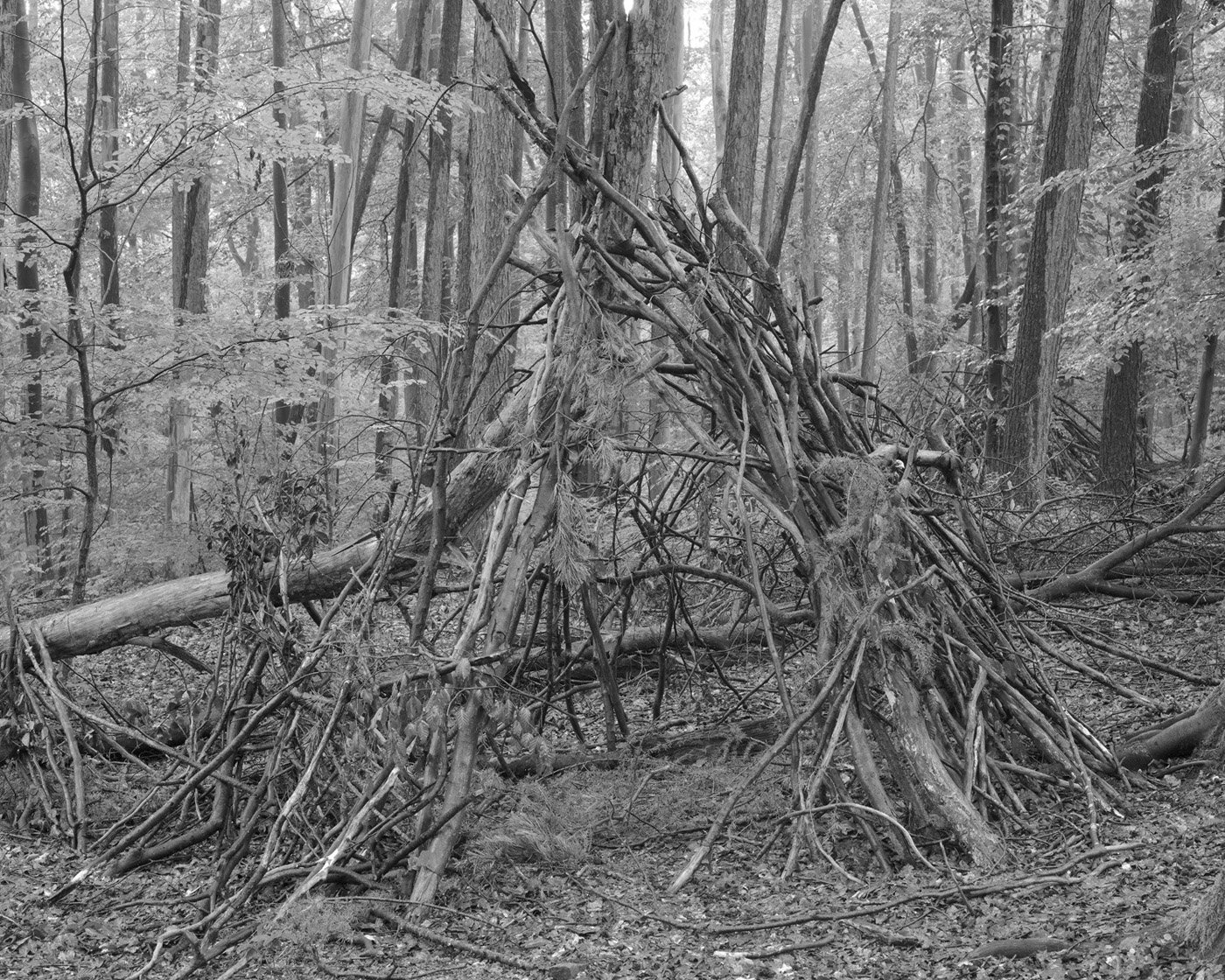SHELTERS is a typological documentation about the temporary and individually erected dens of old wood during the pandemic. Already at the beginning of the pandemic, I noticed the numerous and newly constructed above-ground dens made of old wood. I photographed these various constructed buildings during my daily and long walks around my house through the nearby forest at the outskirts of Stuttgart, Germany. All photographs were taken within a three mile radius. Many of these dens are not located in a light-flooded forest meadow, but hidden like small shelters between trees and dense bushes. Some of them are only one meter in height combined with a very low entrance, while others are up to three meters high and rise out of the dense thicket like tipis. The main material consists of beech, maple, ash or oak trees. They vary in structure and design. Some are built very solid with a basic knowledge of architecture, while others did not withstand any storm.
Young teenagers, but also parents with their children, have built them in hours or even days. In a time of drastic social change and severely limited social contact opportunities, these newly created places provide small oases of calm, reflection and distraction. Time due to the absence of the usual leisure activities, the home office, and homeschooling is plentiful. The new discovery of the nearby forest is therefore a good opportunity. The dens represent small havens for a few hours in a serene world. Throughout the history of mankind, people have sought shelter in the forest during tense times. Over time, the shelters have been expanded or parts of them have been used for other shelters in other places in the forest. Now after two years of pandemic and the relaxations in force again, these transient shelters seem to have had their time. The forest makes the ephemeral constructions its own again.
Oliver Raschka studied and holds a doctorate in the field of behavioural economics. This helps him to capture the dynamics and specifics of social relationships in his photography. For many years, the photographic autodidact has been dealing with the subject of family and the search for his own identity, among nature and other things, in documentary format. He loves black-and-white photography, coffee is the drug of his choice, and loud rock music is what he likes. A first book documenting the lives of his sons over a period of ten years was published in 2020 via BUMMBUMM BOOKS (Cologne). He lives with his family in Stuttgart, Germany.














